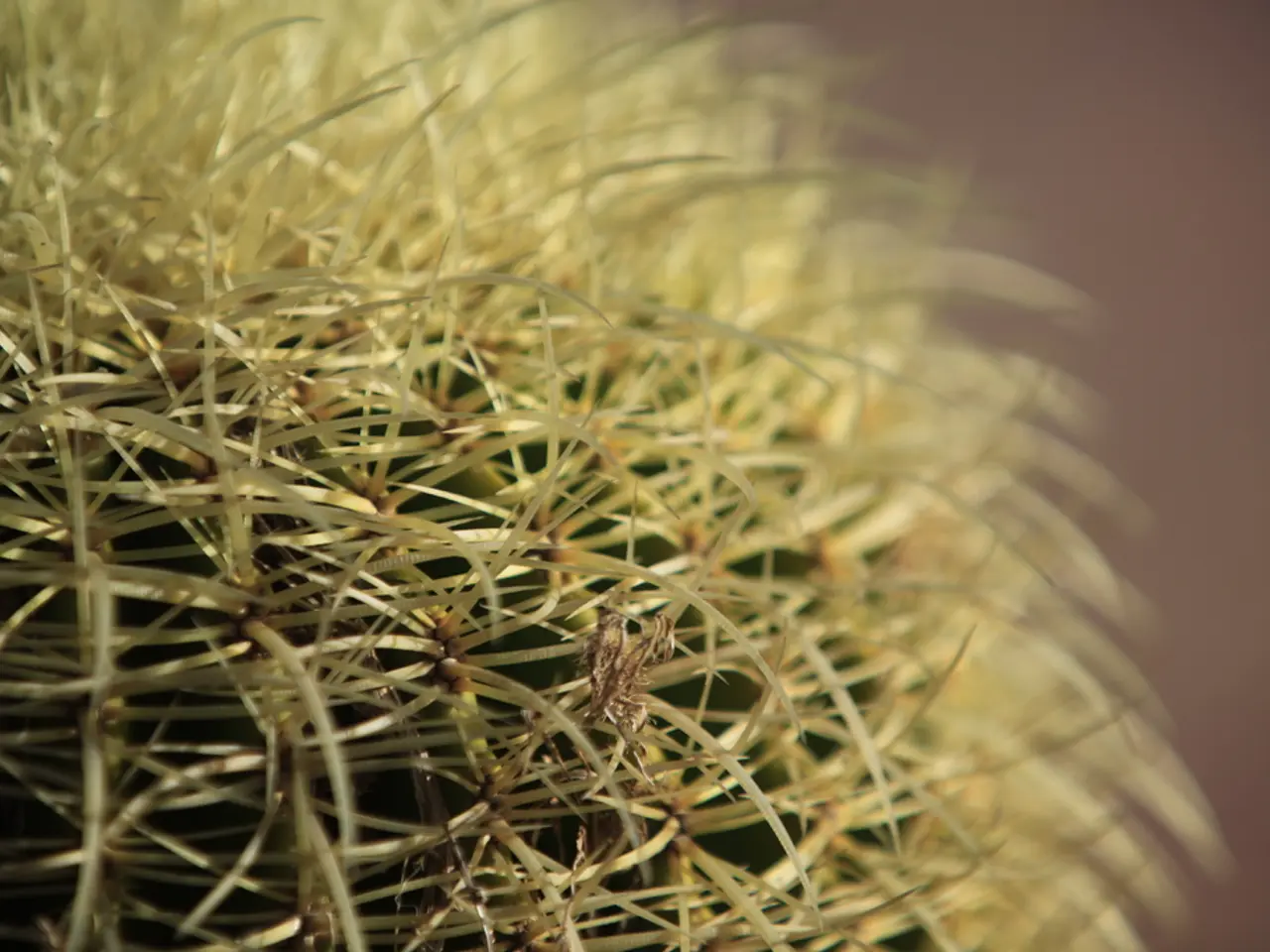Techniques for Transferring a Tall Saguaro: Advice from Professionals for a Flawless Process
Transplanting a tall cactus can be a daunting task, but with the right tools and careful preparation, it can be done safely and efficiently. Here's a step-by-step guide to help you through the process.
Preparation
Choose a Suitable Location
When transplanting a cactus, it's essential to pick a suitable new location or pot with well-draining soil. If you're repotting indoors, select a pot slightly larger than the current root ball to allow room for growth. Opt for clay pots with natural drainage holes for well-draining soil environments.
Watering the Cactus
Water the cactus a few days before transplanting so the soil is slightly moist but not wet. This helps to reduce stress during the transplant process.
Gathering Essential Tools
To safely transplant a tall cactus, you'll need the following tools:
- Thick gloves to protect from spines.
- Clean, sharp knife or pruning shears (for trimming roots if necessary).
- Burlap, thick foam, or folded newspaper to wrap around the cactus for safe handling.
- A sturdy shovel or trowel for digging.
- Well-draining cactus or succulent potting mix.
- A pot with drainage holes or a prepared planting hole outdoors.
Transplant Process
1. Wrap the Cactus
Carefully wrap the tall cactus with protective material such as burlap, thick foam, or folded newspaper to avoid damage and injury. If the cactus is tall, you might want to wrap it in newspapers for extra protection during removal.
2. Loosen the Soil
Use a shovel or trowel to gently loosen and dig around the base, digging deep enough to lift the root ball intact. In this step, use a trowel to loosen the soil around the cactus carefully.
3. Trim the Roots (if necessary)
If you're repotting, trim any unhealthy or rotten roots with clean scissors or a knife. Inspect the roots for signs of rot and trim away any damaged parts.
4. Lift the Cactus
Lift the cactus by the wrapped base or soil gently, avoiding bending or breaking the stem.
5. Transfer the Cactus
Place the cactus into the prepared hole or pot, ensuring the root crown is slightly above soil level. Fill soil around the roots and gently firm to remove air pockets.
6. Wait Before Watering
Avoid watering immediately; wait several days to allow minor root injuries to heal and prevent root rot.
Post-Transplant Care
- Keep the cactus in bright, indirect sunlight initially to reduce stress.
- Resume watering only after about a week, sparingly, allowing soil to dry out fully between waterings.
- Fertilize lightly during the growing season (spring) with diluted balanced (5-10-5) fertilizer about once a year.
- Monitor the cactus for signs of stress or pests and avoid overfertilizing or overwatering.
In summary, the keys are protective handling, ensuring a well-prepared planting site, gentle root care, and cautious watering and light exposure post-transplant.
Glen, an experienced gardener with over 15 years of hands-on experience in garden maintenance, design, and landscaping services, writes helpful content for a blog. He has recently posted guides on garden fungicides, candy cane peppers, and watermelon harvesting.
- Glen, the experienced gardener, has also shared his expertise on taking care of a home-and-garden lifestyle by writing a guide on home-grown cacti transplanting, providing essential tips on gardening.
- Alongside his posts on garden fungicides, candy cane peppers, and watermelon harvesting, Glen offers advice on repotting tall cacti to improve their lifestyles in new locations while maintaining their health.







